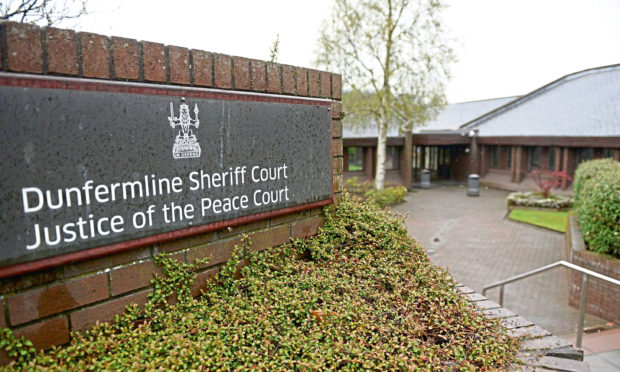A Fife architect has been jailed for conning a client with a fake building warrant.
Construction consultant Derek McCafferty gave the bogus document to a householder who was having an extension built.
It was only when the work was complete the home owner discovered he had not been given permission for the project to go ahead.
McCafferty, from Dunfermline, has a previous conviction for duping another customer in the same way in 2015.
A sheriff told McCafferty he was “a thoroughly dishonest man”.
He had been warned in the previous case that he had narrowly avoided a jail term.
McCafferty, 47, of Malcolm Street, admitted that on December 23 2016 and September 7 2017 at Cedar Grove, Dunfermline, he uttered as genuine a building warrant and completion certificate for a building extension to a client.
The crooked architect is the son of retired rock star Dan McCafferty, who was singer with the band Nazareth for decades with hits such as ‘Bad Bad Boy’ and ‘Love Hurts’.
Depute fiscal Katherine Fraser told Dunfermline Sheriff Court McCafferty runs his own construction consultancy business, Draft 4 Design.
He was hired to do work for a home owner who wanted to extend his house in Dunfermline.
Work was progressing as planned and the home owner asked about the building warrant. McCafferty supplied one but it was bogus.
The building standards department was notified the extension had been completed and it was only at that stage it emerged there was no building warrant in place.
When interviewed by police McCafferty initially said it was an “error” but then admitted falsely producing the warrant. Asked why, he replied: “No idea”.
He added he felt he had become friends with the home owner and that he “didn’t want to let him down”.
The depute said the home owner estimated it had cost him £4500 to put matters right with the planning authorities.
Sheriff James MacDonald said McCafferty “was quite fortunate there was no order made for demolition”.
Defence solicitor Russel McPhate said his client is a qualified architect but does not belong to any professional body.
He said McCafferty had a gambling addiction at the time of the offence, “his life was a mess” and his marriage broke down.
The solicitor went on, “He didn’t know the work had started. When the complainer contacted him about a building warrant he panicked. He thought, ‘This must be my fault because my work’s in a mess’.
“He falsified the documents. He was extremely stupid but he made no profit from it.”
However, Sheriff MacDonald said he believed if the deception had not been uncovered McCafferty would have sent a bill for his services.
He said: “On any view, what can be said is that you are a thoroughly dishonest man.
“This was a significant breach of trust as a professional person.
“No doubt there will be civil proceedings brought. The public are entitled to expect better of professionals.
“One case of dishonesty is bad enough. Two within five years is really quite disgraceful.”
He jailed him for six months.
In 2015, McCafferty was given a community payback order with the maximum amount of unpaid work, 300 hours.
The home owner in that case paid him £1162 and was told planning permission had been granted but McCafferty had handed over fake documentation.
The woman first became aware of problems when neighbours wanted to know why they had not been told any building was planned and pointed out there was no application for the work on the Fife Council planning website.
When the client checked the reference number given to her by McCafferty on the council website she discovered it related to another property.
